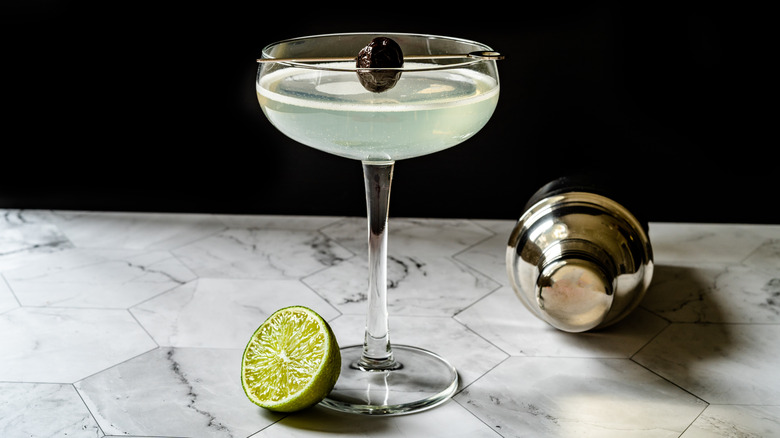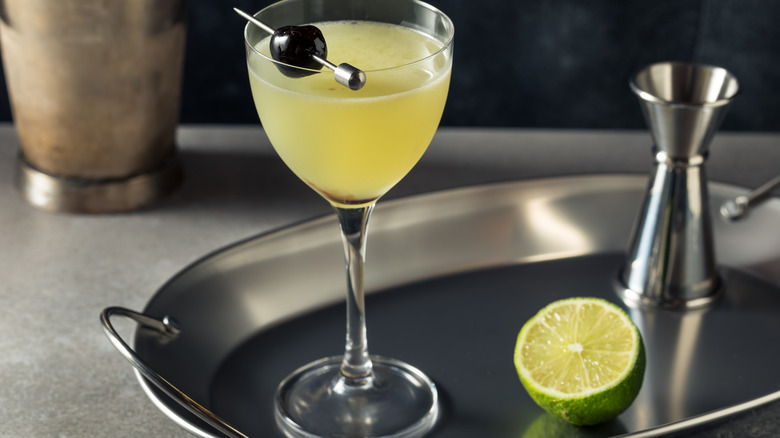The Forgotten History Of The Last Word Cocktail
Cheers to Prohibition-era cocktails and the rich history — and sometimes mystery — of their origins. One cocktail stands out among the best pre-Prohibition drinks: the Last Word, which features a mixture of gin, lime juice, green chartreuse, and maraschino liqueur. The drink boasts an eerie green hue, and offers a refreshing blend of sweetness, tartness, and herbal flavors.
There is some murkiness as to the exact origins of this classic cocktail, but it is widely understood that the drink was born at the Detroit Athletic Club in Michigan in the early 1900s. Although its invention was mistakenly first attributed to popular vaudevillian entertainer Frank Fogarty, it is generally thought that Fogarty did help to spread the word by introducing it to his audiences in New York.
The first recorded publication of the cocktail recipe was found in the 1951 book by Ted Saucier called "Bottoms Up." Though a delightful cocktail, its popularity waned well into the 21st century, only to be rediscovered in 2005 by Seattle bartender Murray Stenson, who came across the recipe while reading a copy of Saucier's book. Stenson decided to add the Last Word to the menu at the Zig Zag Cafe, and it became an instant hit, its revival in popularity spreading from coast to coast.
The modern life of the Last Word
What makes the Last Word especially intriguing is its equal-parts composition of its four bold ingredients, around ¾ ounce each in modern pours. Interestingly, the scarcity of one ingredient made headlines during the COVID-19 pandemic. Green chartreuse, a Carthusian monk-made liqueur hailing from the French Alps, became increasingly difficult to source during the lockdown period, as the monks who produced it capped their production to allow more time for religious practices. This, coupled with many at-home bartenders experimenting with craft cocktails for the first time, put the liqueur in high demand.
The Last Word lends itself to a range of variations, with riffs on the classic cocktail considered effective "plays on words." Such versions as the Naked and Famous and Other Word substitute green for yellow chartreuse. The Industry Sour includes a heavy punch of fernet balanced out with simple syrup. One interpretation called Pete's Word replaces gin altogether in favor of Laphroaig scotch whisky. Though different in makeup, the one constant in each of these cocktails is keeping the general spirit of the Last Word alive and well. Understanding the origins of your favorite cocktail is a lesson in history as much as it is in mixology, both of which are paramount to a better understanding of the world.

